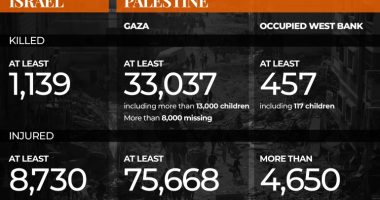Stay informed with free updates
Simply sign up to the UK inflation myFT Digest — delivered directly to your inbox.
Prices of non-food items in UK supermarkets have fallen year on year for the first time since 2021, taking overall shop inflation below 1 per cent, according to industry data that will come as a relief to consumers hit by higher living costs.
The British Retail Consortium said on Tuesday that annual shop price inflation slowed to 0.8 per cent this month from 1.3 per cent in March, the lowest rate since December 2021.
Non-food items entered deflation at minus 0.6 per cent in April, which the trade body attributed in part to retailers offering promotions. The reading was down from a 0.2 per cent increase in March, the lowest since October 2021 and the first negative reading since December 2021.
The BRC shop price index offers an early indication of pricing pressures ahead of official data published on May 22. Helen Dickinson, BRC chief executive, said the latest figures indicated that prices were “showing signs of normalising, providing relief to households” after the cost of living crisis.
“Both food and non-food have seen shop inflation rates ease to more manageable levels,” she added, noting that prices had fallen especially in clothing and footwear.

In March, the official measure of consumer price inflation — which unlike the BRC index includes services, energy and travel — fell to a two-and-a-half-year low of 3.2 per cent.
Economists polled by Reuters forecast that it would drop below the Bank of England’s 2 per cent target in the second quarter of this year, following the reduction in the energy price cap announced by regulator Ofgem in February.
The BoE is grappling with internal divisions over how soon to lower interest rates from 5.25 per cent, and facing growing Conservative pressure for rate cuts ahead of the next meeting of the Monetary Policy Committee in May.
Chancellor Jeremy Hunt has repeatedly invoked the prospect of cuts as he seeks a feelgood factor in the economy ahead of the general election expected this year.
The BRC figures suggest easing inflation continued in April beyond energy, including for food products whose prices surged after Russia invaded Ukraine in 2022.
Lower inflation, combined with still strong wage growth, should support demand and help spending rebound, economists argue.
The BRC said food inflation slowed to 3.4 per cent in April from 3.7 per cent in March, the lowest reading since March 2022.
This was the result of slower price growth for fresh food — down to 2.4 per cent in April and the lowest since November 2021 — as well as for ambient food, which can be stored at room temperature. Ambient food inflation dropped to a near two-year low of 4.9 per cent in April, according to the trade body.
Mike Watkins, head of retailer and business insight at research company NielsenIQ, which helped compile the data, said it was “good news for shoppers that the cost of their grocery shop is starting to stabilise and that the prices of many non-food goods are now cheaper than a year ago”.
“To help shoppers manage household budgets, retailers continue to promote and this provides further savings and we expect this to continue to help drive overall demand,” he added.
Read More: World News | Entertainment News | Celeb News
FT









